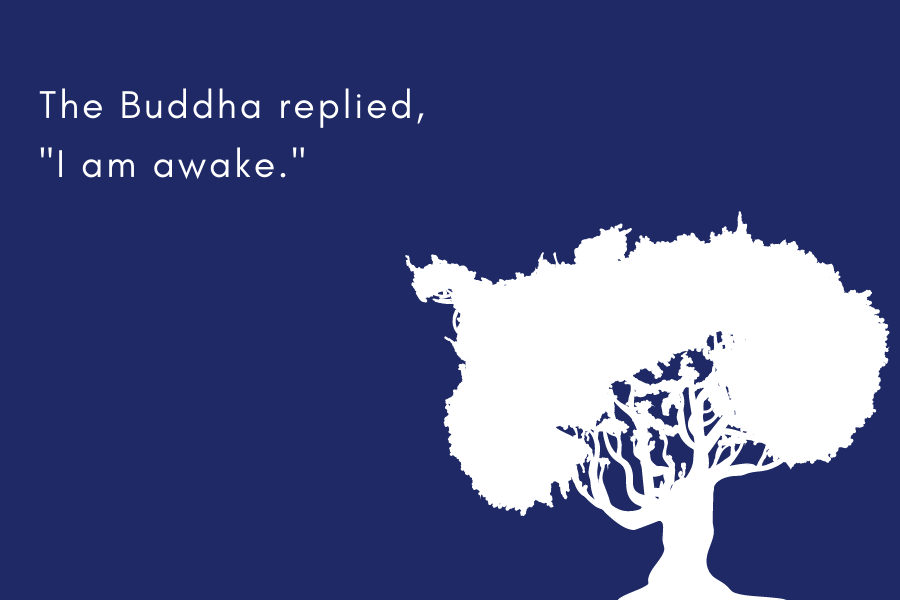He knew that he wanted to always be happy and never suffer. He knew that everyone wanted to be happy and free from suffering—not just for a moment but always—just as he did. He also now knew that our best efforts were not enough to make that happen.
In fact, quite often, the more fervently we try to push away suffering and pursue happiness, the more suffering we call upon ourselves. He himself had gone on these outings because he was suffering, feeling like a bird in a golden cage. Yet with each foray into the outer world, he felt far worse. His father had thrown one huge party after another, and Prince Siddhartha had watched the guests drinking and overeating, in pursuit of happiness—their reward an upset stomach, at best.
How can we actually achieve lasting happiness? He resolved that he absolutely must find the answer, at all costs. He knew that to find that answer, he needed to see reality and the nature of the mind as it truly is. But how could he do that?
He went out one more time. This time Siddhartha saw a thin man in thin rags, with a walking stick and a small bowl. The most striking thing to the prince was that this man was happy—in fact, he was the happiest person Siddhartha had ever seen! He looked like a beggar, which the prince had seen on his recent outings, but instead of abject misery, this fellow radiated joy.
“Who’s that?” he asked the charioteer.
“That’s a mendicant, a spiritual seeker.” Now Siddhartha knew what to do.
He resolved that, for the sake of all suffering beings, he had to answer this great question once and for all: How can we be completely free from suffering and experience ultimate joy without end? He knew that the answer did not lie within the palace walls, but with spiritual masters. One night, just before dawn, he escaped.
He wandered for many years, eating only what people gave him in his begging bowl, studying from some of the greatest masters of the day. At last he had surpassed all of them. Yet he still had not quite come to see naked reality, without even the slightest veil of his own interpretations. He hadn’t found the key to ultimate, lasting happiness.
So he spent many more years starving himself and following other ascetic practices, but came to the end of that too. He concluded that abusing his body was not an effective path to enlightenment. At last, still short of his goal, he sat down under a bodhi tree with huge heart-shaped leaves, vowing to meditate on that spot without rest, until he reached complete enlightenment.
He stayed awake all day and all night, holding his consciousness in a steady, pure state. Many unbelievably compelling temptations and distractions appeared, but he held firm. At last, with the waters of his mind completely calm for the entire night, he attained total enlightenment. He had passed the point of no return to the confused perception of the world that we all have. He had fully awakened from the confused dreamlike state that we mistake for true reality and that is actually the source of our suffering. He was now in a state of perpetual bliss, from which he never had to depart. He had now realized the secret of eternal happiness. He had attained it.
Shortly after his enlightenment, he was walking down the road. Struck by his brilliantly radiant presence and visible aura, a passerby stopped and asked him,
“Are you a deity?”
“No.”
“Are you a sorcerer, then?”
“No.”
“An ordinary man?”
“No.”
“Well, then, what are you?”
“I am awake.”

In Sanskrit, the word for “awakened one” is buddha.
At that time he already had a few students. When they saw that he had gained total enlightenment and achieved eternal happiness, they said,
“Please teach us, so we can be fully enlightened, too!”
“I would love to, if only I could portray it in words. True reality is beyond concepts. Anything we can think of, or put into words, is not true reality. In that case, how can I teach it, or even talk about it?”
“But you can’t just leave us here to suffer and die, again and again! Please do something to help us!”
And so began the famous teachings of the Buddha, which we know today as the Dharma. In giving us the Dharma (literally, “truth” in Sanskrit), he gave us the methods by which we all can come to experience what he had experienced, the reality he now always abided in.
But he didn’t ask them to practice these methods just because he said to; he felt that blind faith wasn’t worth much. He asked them to try the methods for themselves, to see if they worked for them. The faith of our own experience is unshakable. We can’t unknow something once we’ve come to know it for ourselves.”
The Buddha lived, wrote, and taught these methods for many, many more years, establishing the first Buddhist Sangha, or spiritual community, the foundation for Buddhism as we know it today.
Find out more about Why Bother? An Introduction by Lama Tsomo.
© 2022 Lama Tsomo LLC. Namchak Publishing Company LLC.
